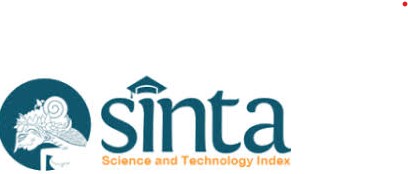Nusantara Jurnal Pengabdian kepada Masyarakat
Identitas Jurnal
- Judul Terbitan Nusantara Jurnal Pengabdian kepada Masyarakat
- Sub Judul Jurnal Pengabdian kepada Masyarakat
- Nama Institusi Pusat Riset dan Inovasi Nasional
- Jenis Jurnal Penelitian
- Akreditasi Jurnal Nasional Terakreditasi Sinta 5
- Terbitan 4x Setahun (Februari, Mei, Agustus, November)
- Bidang Ilmu Multidisciplinary
- P-ISSN 2962-360X
- E-ISSN 2962-4800
- Biaya APC Rp 500.000
- Artikel Per Tahun 100 Artikel
- Lama Waktu Terbit 8 Hari
- Prosentase Penerimaan 25%
-
Indeksasi






Deskripsi
NUSANTARA: Jurnal Pengabdian Kepada Masyarakat adalah menerbitkan dan menyebarluaskan hasil penerapan ilmu pengetahuan, teknologi, dan seni melalui program pengabdian atau layanan kepada masyarakat untuk mengembangkan teori keilmuan, konsep pemikiran, model, dan hasil penelitian baik dibidang kesehatan, sosial dan humaniora. Pengabdian atau layanan kepada masyarakat yang dimaksud adalah upaya untuk meningkatkan partisipasi masyarakat dalam pembangunan, pemberdayaan masyarakat, peningkatan kemampuan (skill) sehingga meningkatkan kualitas kehidupan masyarakat atau komunitas
Article indexed DOI
Nusantara Jurnal Pengabdian kepada Masyarakat
DOI : 10.55606/nusantara.v5i3.6219 - Volume: 5, Issue: 3, Sitasi : 0
06-Aug-2025 | Abstrak | PDF File | Resource | Last.13-Aug-2025
DOI : 10.55606/nusantara.v5i3.6490 - Volume: 5, Issue: 3, Sitasi : 0
06-Aug-2025 | Abstrak | PDF File | Resource | Last.13-Aug-2025
DOI : 10.55606/nusantara.v5i3.6451 - Volume: 5, Issue: 3, Sitasi : 0
05-Aug-2025 | Abstrak | PDF File | Resource | Last.11-Aug-2025
DOI : 10.55606/nusantara.v5i3.6464 - Volume: 5, Issue: 3, Sitasi : 0
04-Aug-2025 | Abstrak | PDF File | Resource | Last.13-Aug-2025
DOI : 10.55606/nusantara.v5i3.6425 - Volume: 5, Issue: 3, Sitasi : 0
31-Jul-2025 | Abstrak | PDF File | Resource | Last.13-Aug-2025
DOI : 10.55606/nusantara.v5i3.6430 - Volume: 5, Issue: 3, Sitasi : 0
31-Jul-2025 | Abstrak | PDF File | Resource | Last.13-Aug-2025
DOI : 10.55606/nusantara.v5i3.6197 - Volume: 5, Issue: 3, Sitasi : 0
09-Jul-2025 | Abstrak | PDF File | Resource | Last.13-Aug-2025
DOI : 10.55606/nusantara.v5i3.6158 - Volume: 5, Issue: 3, Sitasi : 0
09-Jul-2025 | Abstrak | PDF File | Resource | Last.11-Aug-2025
DOI : 10.55606/nusantara.v5i1.5553 - Volume: 5, Issue: 1, Sitasi : 0
17-Jun-2025 | Abstrak | PDF File | Resource | Last.13-Aug-2025
DOI : 10.55606/nusantara.v5i3.5597 - Volume: 5, Issue: 3, Sitasi : 0
18-Jun-2025 | Abstrak | PDF File | Resource | Last.11-Aug-2025
Artikel PerTahun
Artikel PerVolume
Sitasi Per Tahun
Tahun 2025, Volume.5, Issue.3 (9)
Tahun 2025, Volume.5, Issue.1 (2)
Tahun 2025, Volume.5, Issue.2 (24)
Tahun 2023, Volume.3, Issue.3 (1)
Tahun 2022, Volume.2, Issue.4 (7)
Tahun 2022, Volume.2, Issue.3 (12)
Tahun 2022, Volume.2, Issue.2 (11)
Tahun 2022, Volume.1, Issue.2 (1)
Tahun 2022, Volume.2, Issue.1 (3)
Tahun 2021, Volume.1, Issue.4 (5)
Tahun 2021, Volume.1, Issue.3 (3)
Tahun 2021, Volume.1, Issue.2 (2)
Tahun 2021, Volume.1, Issue.1 (3)
